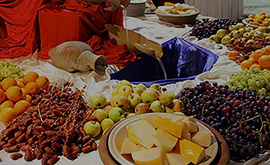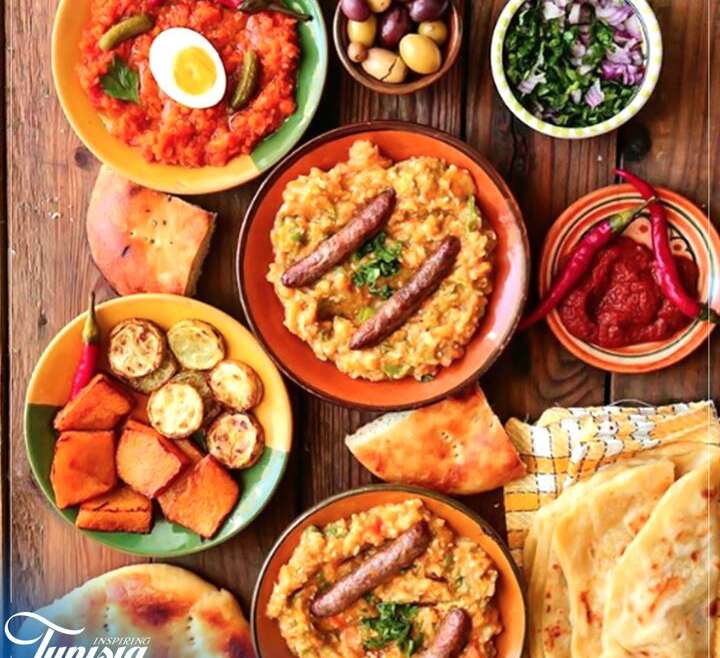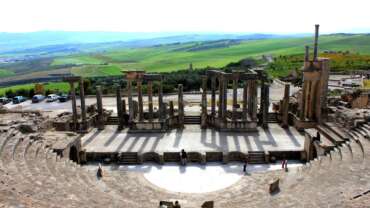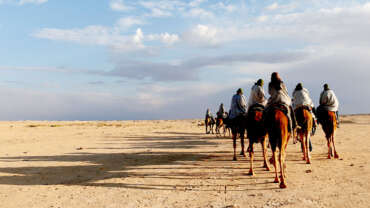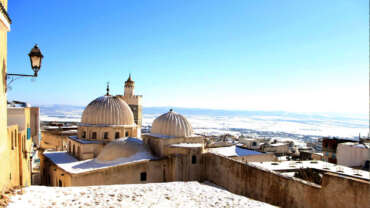Gastronomy in Tunisia - Flavours from around the world
All the flavours you could imagine can be found in Tunisia. Whether you’re in a city restaurant or a hotel, you’ll come across fantastic Asian cuisine and tapas bars as well as French and Italian dishes.
Above and beyond traditional Tunisian recipes, you can enjoy an inventive take on Mediterranean cuisine in a chic restaurant overlooking the sea, cocktails and nibbles in a trendy bar, or delicious Italian food in a laid-back atmosphere. You can eat sushi, seafood lasagne or sirloin steak with a Roquefort sauce as you gaze out to sea.

Wines
It is no coincidence that one of the most highly rated wines in Tunisia (Magon) is named after Mago, the Carthaginian agronomist who wrote the first guide on how to make wine. The love story between Tunisia and wine dates back to the Phoenicians. Wine production slowed down somewhat when Islam arrived, but saw a revival at the end of the 19th century, when large numbers of Italians came to Tunisia, followed by the French. Most Tunisian grapes are the same as the ones you would find in the south of France, like Cabernet-Sauvignon, Carignon, Syrah and Mourvèdre for red wines, and Chardonnay, Muscat, Ugni and Sauvignon for whites.
Today, the country produces some fantastic wines, and boasts seven AOCs, including the Magon (AOC Mornag, Syrah and Merlot). Tunisian wines just keep getting better and are winning gold medals at international competitions thanks to partnerships with experts and investors from Italy, France and Australia.
Sophistication and tradition
Tunisian cuisine has its classics, like couscous with lamb or fish; as a starter, you can try a Tunisian “tagine” – a thick omelette with vegetables and cheese, not unlike a Spanish tortilla – and a “mechouia” salad – grilled, crushed tomatoes and peppers. Also worth a try are a traditional stew, or “marqa” (with potatoes, vegetables and peas), “mosli” (baked fish or lamb), “complet poisson” (grilled fish and fried vegetables) or “kabkabou” (fish stew with olives and confit lemon). In the souks in medinas, you’ll find some delicious snacks to satisfy you if you’re feeling a bit peckish: the famous crispy, golden egg “brik”, a little “fricassé” sandwich, “kafteji” (summer vegetables with egg, fried and then mixed up), or a bowl of “lablabi” (spicy chickpea soup).
Pull up a chair in a palace or “fondouk” (a roadside inn) that has been converted into a restaurant, you’ll enjoy the best that Tunisian gastronomy has to offer. For example, couscous with grouper, quince and rosebuds; a plate of stiffed vegetables, “fondouk el ghalla”; or stewed sweet and sour lamb with prunes and almonds, “marqa h’loua”. For pudding, try “bouza”, a pistachio cream, or a pastry flavoured with rosewater. Then wash it all down with some mint tea and pine nuts.
